Key takeaways:
- Genre collaboration fosters creativity and innovation, allowing artists to blend distinct styles and reach wider audiences.
- Songwriting awards recognize and motivate artists, bridging generations and amplifying diverse voices within the industry.
- Collaborating across genres encourages emotional depth in music and opens new avenues for artistic expression and career growth.
- Effective genre collaboration relies on open communication, willingness to experiment, and stepping out of comfort zones for unexpected breakthroughs.
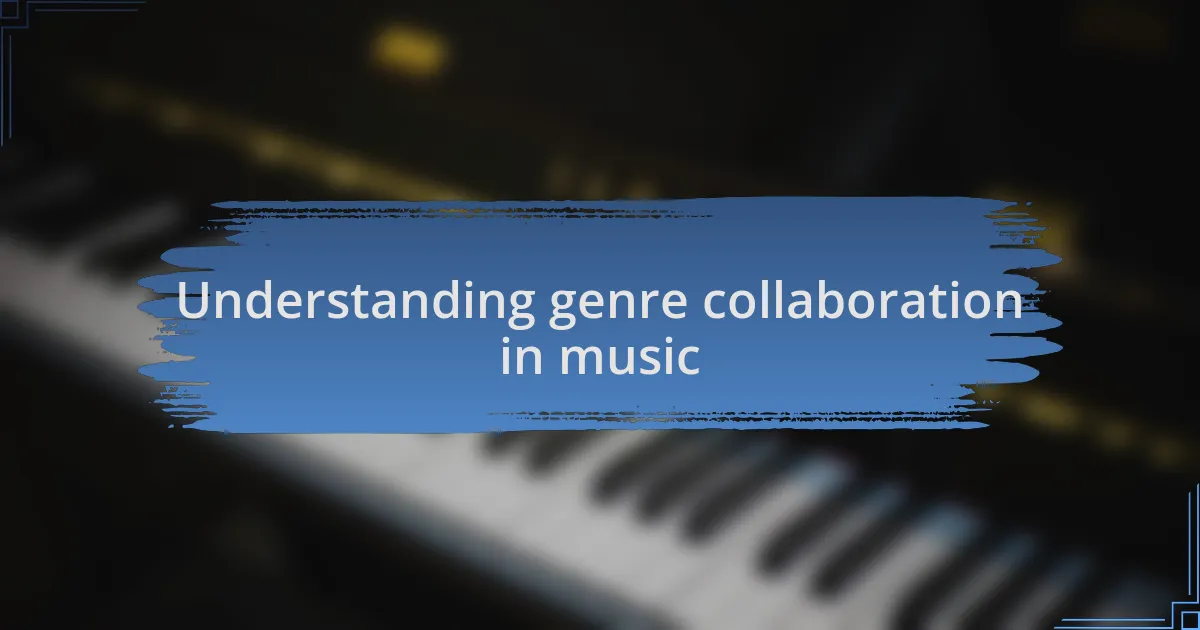
Understanding genre collaboration in music
Genre collaboration in music serves as a fascinating exploration of creativity and innovation. I remember the first time I heard a country song infused with hip-hop elements; it felt like I was witnessing a cultural conversation. How thrilling is it when artists push the boundaries of traditional genres to create something entirely new?
Delving into genre collaboration reveals an exciting tapestry of sounds and influences. It’s not just about blending styles; it’s about storytelling. For example, I once attended a concert where a jazz artist teamed up with a rock band. The energy in the room changed instantly; it was as if each genre brought its distinct personality, sparking a dialogue that enthralled the audience.
These collaborations often challenge listeners’ perceptions of what music can be. Have you ever found yourself tapping your feet to a mashup of electronic beats with classical strings? I certainly have, and it made me realize how interconnected these genres truly are. By merging different styles, artists not only reach a wider audience but also foster a deeper appreciation for the richness of musical diversity.
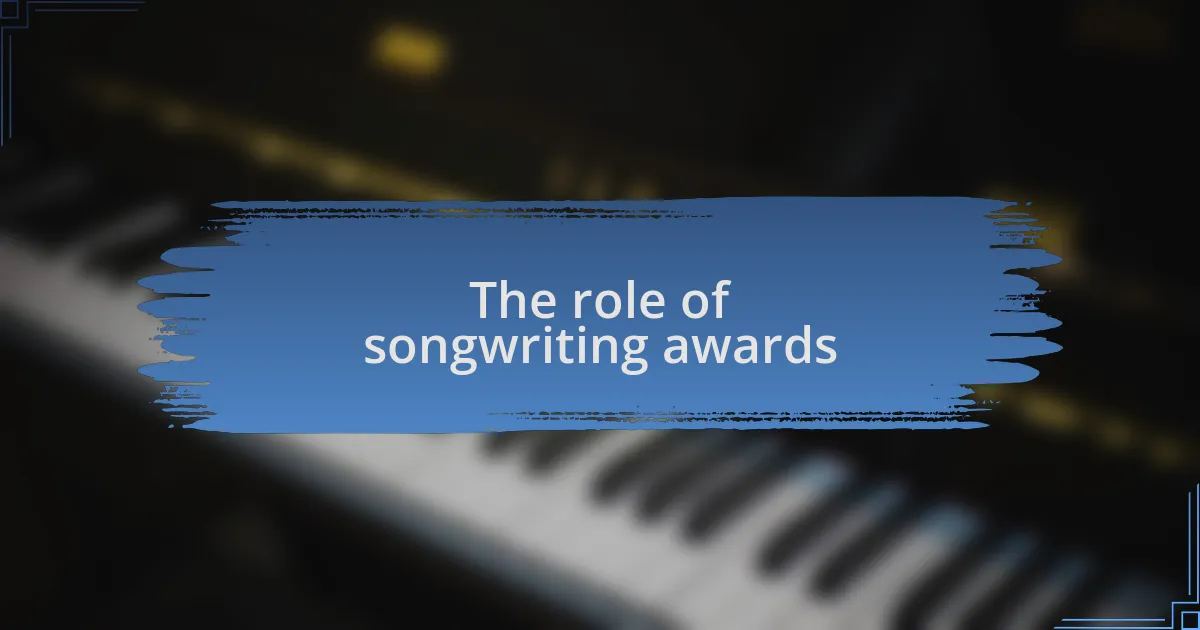
The role of songwriting awards
Songwriting awards play a pivotal role in recognizing and honoring the hard work and creativity of artists. I remember attending a small local awards ceremony where a friend’s song received accolades. The pride in their eyes was unforgettable, and it reminded me of how important recognition is for motivation and growth in a songwriter’s journey.
These awards not only celebrate individual achievements but also help to elevate the entire songwriting community. When I see established songwriters mentoring emerging artists, I can’t help but think about how awards can bridge these generations. It’s inspiring to witness how recognition can encourage collaboration, pushing artists to explore new creative paths they might not have considered.
Moreover, songwriting awards often shine a spotlight on underrepresented voices within the industry. I’ve seen how this recognition can spark conversations about diversity in music, urging songwriters to share their unique stories. Isn’t it amazing how an award can amplify a voice that might otherwise go unheard? The impact of these awards goes far beyond the trophies; they foster a culture of inclusivity and inspiration in songwriting.
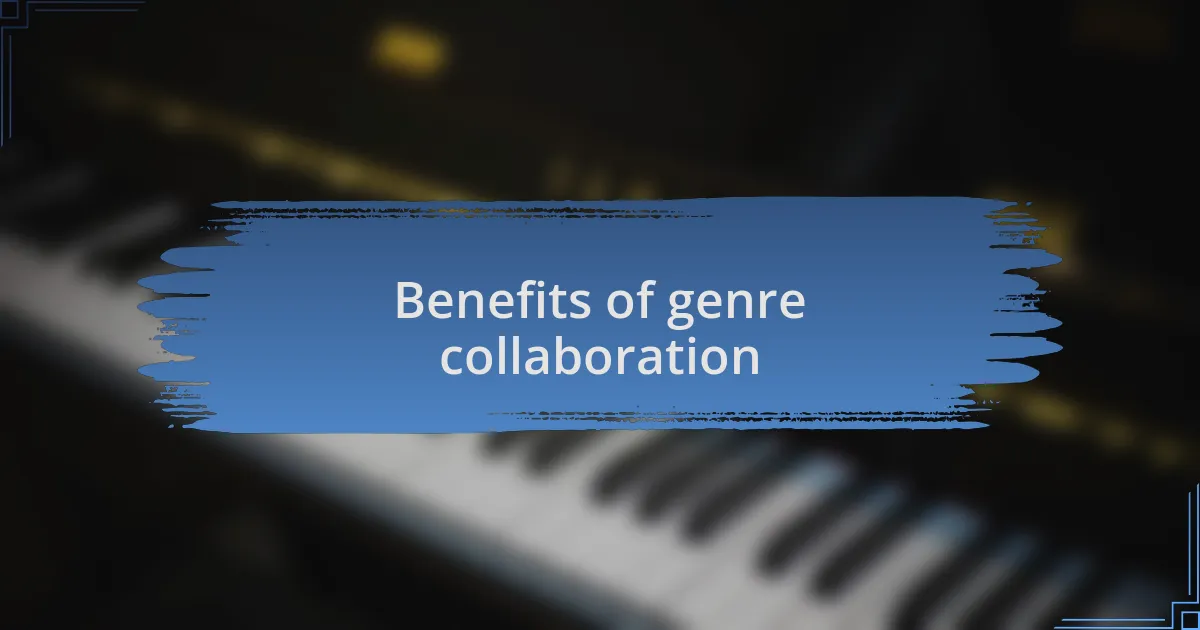
Benefits of genre collaboration
One of the standout benefits of genre collaboration is the opportunity to innovate. I distinctly remember a project where a rock musician teamed up with a hip-hop artist, creating a track that blended energetic guitar riffs with rhythmic rap verses. The unexpected fusion not only captivated both fan bases but also opened my eyes to how creative boundaries can be pushed. Isn’t it exhilarating to think about how breaking genre barriers can lead to fresh musical experiences?
Additionally, genre collaboration often leads to a deeper emotional connection within the music. I once collaborated with a country songwriter who infused storytelling into my pop melodies. The result was a song that resonated with listeners on multiple levels, as they could relate to both the upbeat vibe and the poignant lyrics. This experience taught me that merging different genres can evoke a wider range of feelings, making music even more impactful.
Finally, working across genres can significantly expand an artist’s audience. I know a jazz musician who ventured into electronic music and found an entirely new fan base. Their ability to attract diverse listeners after this collaboration demonstrated to me that genre blending is not just about creativity—it’s also a strategic move for career growth. Have you thought about how stepping outside your musical comfort zone could lead to new opportunities?
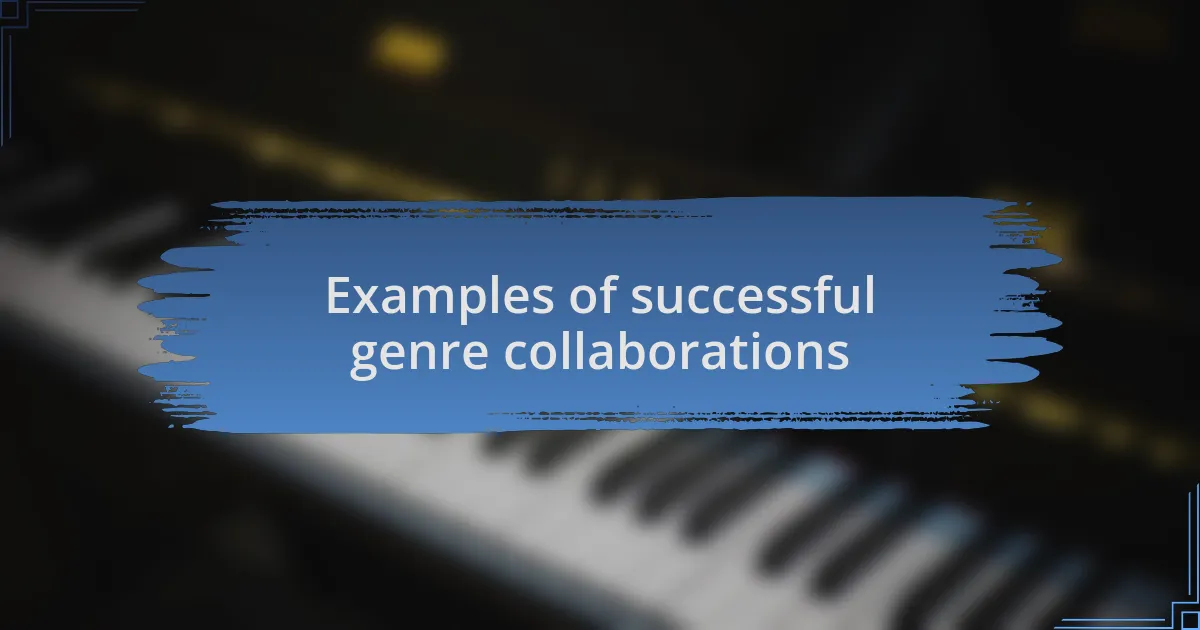
Examples of successful genre collaborations
One compelling example of successful genre collaboration is when Billie Eilish partnered with the pop rock band, The Beatles, through a unique remix of “Here Comes the Sun.” While they come from different musical eras and styles, the combination of Eilish’s ethereal vocals with the iconic melody created a refreshing take on a classic. This not only sparked interest from both young and older audiences but also illustrated how new interpretations can breathe new life into beloved songs.
Another fascinating collaboration was between the classical composer Max Richter and the electronic musician, Hildur Guðnadóttir. When they merged elements of minimalism with ambient sounds, the outcome was nothing short of profound. I recall being deeply moved by how their combined efforts evoked stark imagery and emotion, portraying the beauty in blending genres that may seem incompatible at first glance. Have you noticed how such collaborations can shift your perception of music entirely?
Then there’s the collaboration between Lil Nas X and Billy Ray Cyrus on “Old Town Road.” This genre-blending track brilliantly fused country with hip-hop, and its widespread popularity challenged the traditional boundaries of both genres. Personally, it was eye-opening to witness how well the infectious beat resonated with country fans and hip-hop enthusiasts alike. It seems that when artists are open to collaboration, the results can form new musical movements and redefine what we understand as genre.
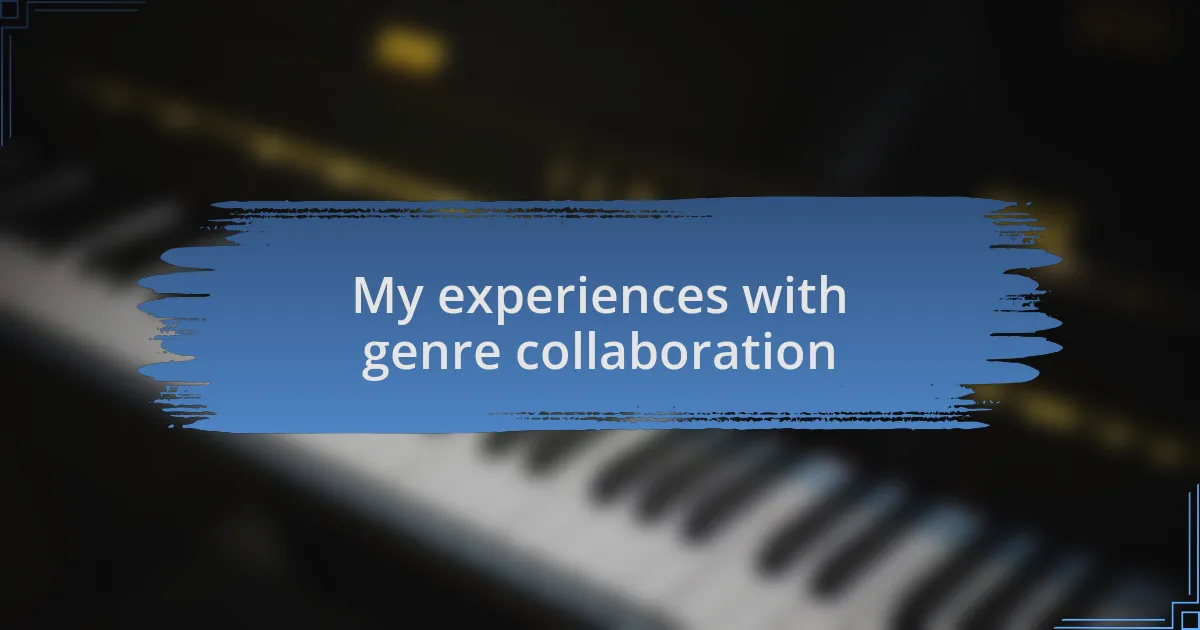
My experiences with genre collaboration
When I think about my experiences with genre collaboration, one standout moment was working on a project that blended folk and electronic music. I remember sitting in my home studio, surrounded by acoustic guitars and synthesizers, feeling a thrill as the warm strumming of the guitar wove seamlessly with pulsating electronic beats. It made me wonder, can the heart of one genre truly enrich another? In this case, I found that the organic and digital elements not only complemented each other, but also created an entirely new soundscape.
Another memorable experience was co-writing a song with a jazz artist. I was initially apprehensive about how our diverse styles would mesh. She brought in intricate chord progressions that felt foreign to me at first, but as we experimented, I discovered a whole new realm of creativity. The final product was a unique blend that revealed layers of emotion. Have you ever felt that spark when something unexpectedly clicks in a collaborative effort? It’s genuinely one of the most rewarding aspects of songwriting.
Reflecting on these collaborations, I also remember how they taught me to embrace vulnerabilities. Each time I merged genres, I had to step out of my comfort zone and trust my instincts. It made me realize that by letting go of rigid classifications, we invite deeper connections in our music. So, how do you feel when you hear a song that breaks all the rules? For me, those moments highlight the beauty of collaboration and remind me that music’s magic lies in its ability to transcend boundaries.
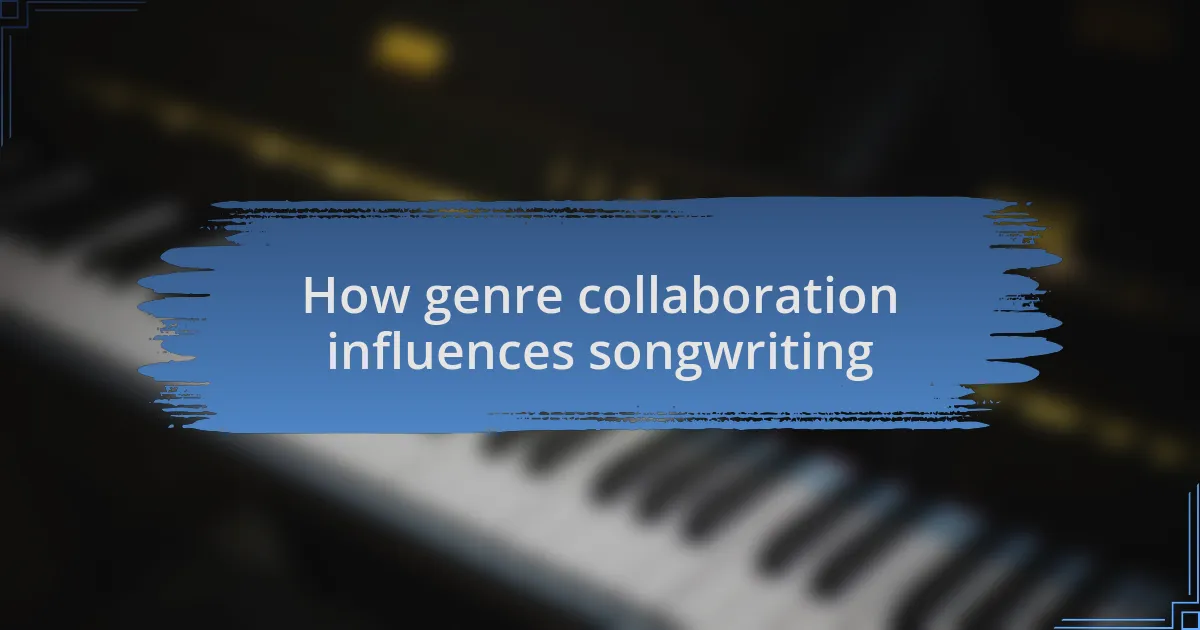
How genre collaboration influences songwriting
When I collaborate across genres, I often notice a remarkable fusion of ideas that pushes me to think differently. I remember a session where I teamed up with a hip-hop artist, who brought a fresh lyrical perspective to the table. Their flow challenged my melodic instincts, resulting in a track that felt both rhythmic and melodic. Isn’t it fascinating how different backgrounds can spark entirely new creative pathways?
On another occasion, I dabbled in a country-pop collaboration. The storytelling tradition of country music forced me to dig deeper into my lyrics. As I delved into themes of love and heartbreak, the blend of catchy pop melodies and heartfelt verses led to an emotional resonance that surprised even me. Have you ever found yourself in a creative situation where the unexpected becomes a source of strength?
These experiences have shown me that genre collaboration can be a breeding ground for innovation. The blending of styles encourages experimentation and risk-taking. I often leave the studio feeling invigorated and inspired, as if I’ve unlocked a new level of artistic expression. Isn’t it amazing how embracing different genres can amplify not just our sound but our soul as well?
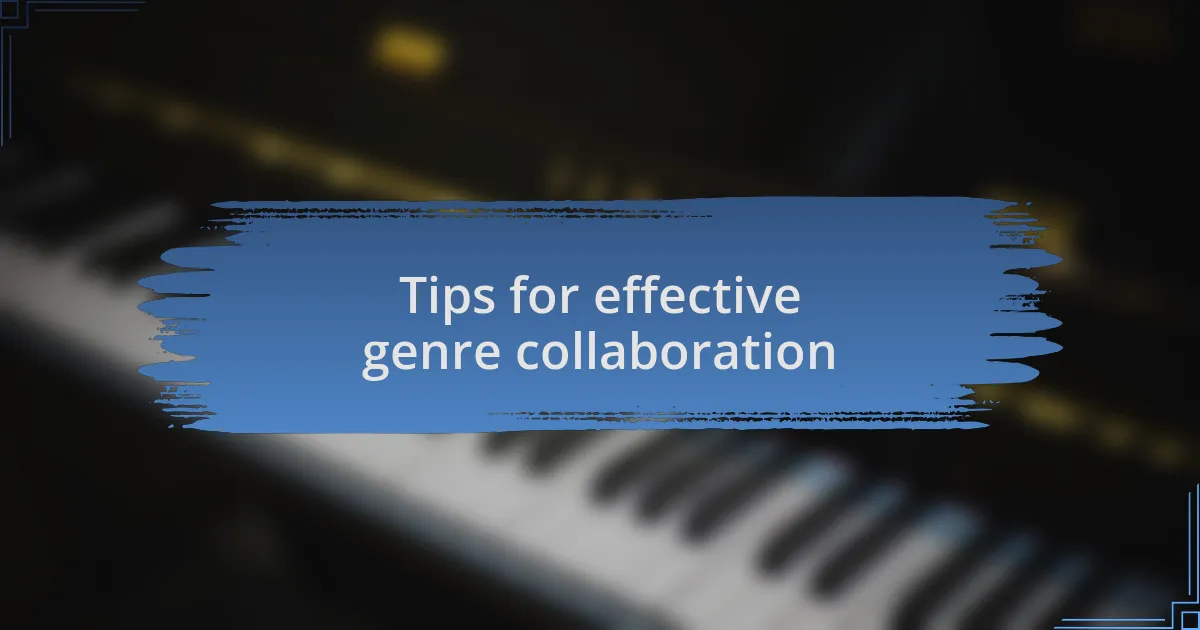
Tips for effective genre collaboration
When engaging in genre collaboration, it’s essential to foster an open mindset. I recall a time when I worked with a jazz musician who approached rhythm differently than I did. The result was a beautiful blend where I had to let go of my typical structure and embrace improvisation. Have you ever found that stepping out of your comfort zone can lead to unexpected breakthroughs?
Communication is key when you’re navigating different musical landscapes. In one project, I made it a point to share my creative goals upfront while also listening closely to my collaborator’s vision. This exchange not only clarified our direction but also sparked ideas that neither of us would have envisioned alone. It’s incredible how a few open conversations can bridge the gap between genres and create a shared understanding.
Lastly, don’t shy away from experimenting during the songwriting process. I’ve found that layering unexpected sounds or rhythms can lead to captivating results. In a recent collaboration, I incorporated elements from electronic music into a folky acoustic track, which created a unique sound that resonated with both genres. Isn’t it thrilling to see how blending techniques can breathe new life into your music?